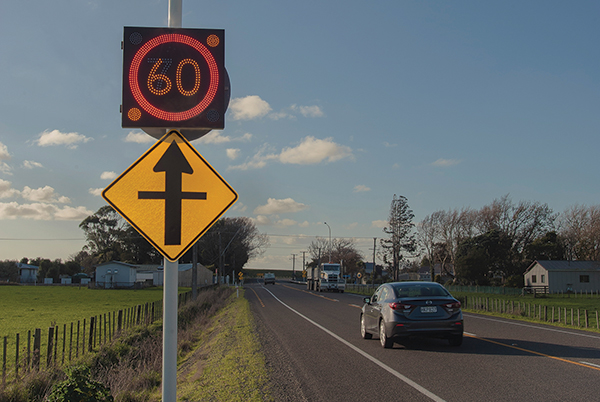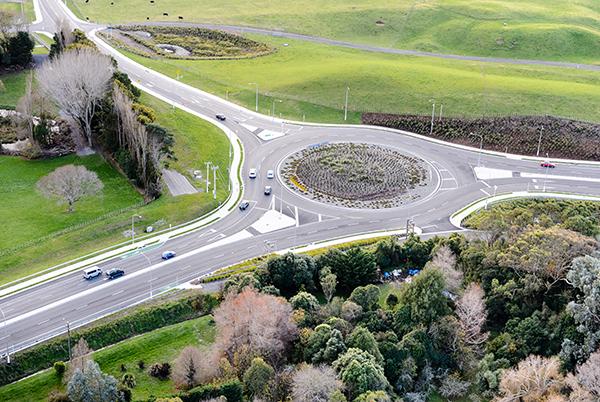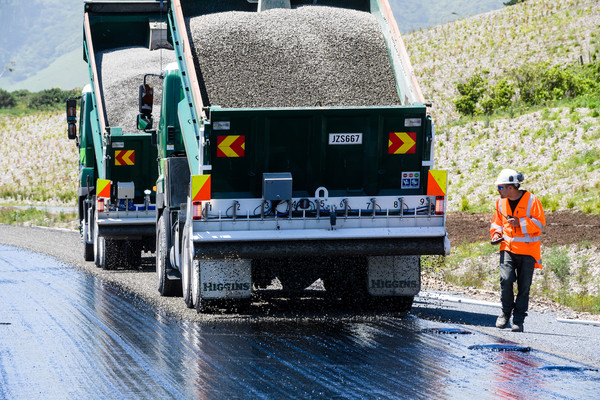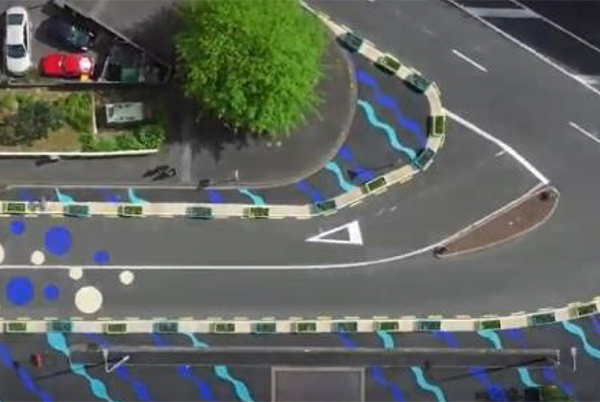To make New Zealand’s roads and streets safe for everyone, we are guided by the safe system approach.
This acknowledges that people make mistakes and we, as system designers, can help create a forgiving road transport system by applying safe system principles in our decision making.
These resources include interventions and solutions that show the safe system principles in action.
Waka Kotahi is keen to share successes from across the system, so other road safety practitioners can be supported to implement these interventions and solutions to help reduce the number of people killed or seriously injured on our roads.
These resources can also be used to help educate and inform key decision makers, and the public, about their effectiveness.
Intersection speed zones improve the safety at rural intersections along high-speed roads.
They detect when a driver is approaching on a side road and activate an electronic Variable Speed Limit sign to temporarily show a lower speed limit on the main road.
They can reduce fatal and serious crashes by 69%.
Intersection speed zone case study [PDF, 976 KB]
Intersection speed zones long term operational and safety performance report [PDF, 1.6 MB]

Raised safety platforms improve safety at intersections by encouraging safer speeds.
They reduce travel speeds, giving drivers more time to react to changes on the road.
They are designed to help keep impact speeds lower and more likely to be survivable.

Roundabouts are a great safety solution for rural intersections.
They simplify decision-making and reduce speeds making it safer for vehicles to enter the flow of traffic.
In this case study rural roundabouts were shown to reduce serious and fatal crashes by 75%.

Flexible median barriers can significantly reduce the occurrence of fatal and serious injuries.
By separating opposing traffic flows, while retaining opportunities for overtaking where passing lanes are provided, high severity crashes are less likely to occur because people are physically separated from what may otherwise be a head-on collision.
SH1 Longswamp to Rangiriri median barrier case study [PDF, 4.2 MB]
SH2 River Road median barrier case study [PDF, 425 KB]
SH59 (formally SH1) Centennial Highway median barrier case study [PDF, 1.2 MB]
Median barrier compendium of knowledge [PDF, 1.7 MB]
Median barrier presentation [PDF, 3.2 MB]
Median barriers: dividing fact from fiction research report [PDF, 795 KB]

Loss of control through skidding can be a significant factor in many crashes (especially when the road is wet). This is why ongoing maintenance and renewal activities are critical to ensure that our roads and streets continue to be safe for everyone.
There are strong proven relationships between skid resistance values and crash rates in both wet and dry conditions.
Particular attention should be paid to the skid resistance properties of the carriageway surface at areas where braking commonly occurs such as on the approaches to intersections, roundabouts, pedestrian crossings and on bends or steep grades.
Understanding the safety impacts and opportunities of state highway resurfacings and renewals

Tactical urbanism can be used to make quick progress by testing and piloting projects to help demonstrate their value to the community.
Sale Street intersection tactical urbanism case study [PDF, 351 KB]

A safe and appropriate speed limit is a speed limit that is safe according to standards set by the Safe System approach and appropriate in terms of aligning with community wellbeing objectives as well as with the movement and place function, design and infrastructure of the street or road.
Speed makes a major difference in a crash; it affects a driver’s ability to react, and worsens the injuries sustained. Regardless of the cause of a crash, speed is the difference between someone being unharmed or being seriously injured or killed. Speed management is a proven way to improve safety, saving lives and preventing debilitating injuries. It also represents a major, yet under-appreciated, opportunity to improve the climate change impacts of travel, support better health and wellbeing, and create greater inclusion.
Implementing safe and appropriate speed limits on central city streets case study [PDF, 1.1 MB]
Mount Maunganui safe and accessible streets case study [PDF, 766 KB]
The effectiveness of safe and appropriate speed limits on rural roads case study [PDF, 1.1 MB]
If you have any feedback, or suggestions for future case studies, email us at roadtozero@nzta.govt.nz